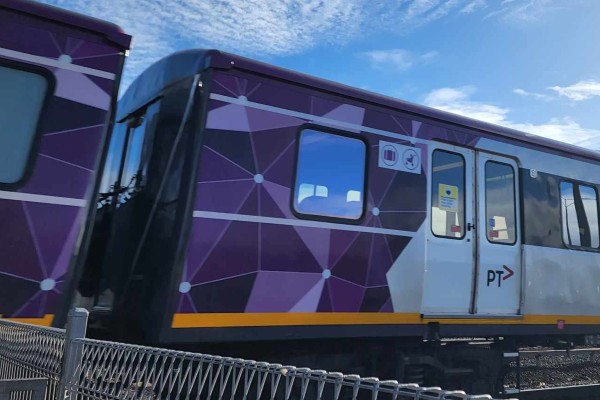About one in five Victorian councils have endorsed a Yes vote at the referendum on an Indigenous Voice to Parliament, but the majority have taken a neutral position ahead of the national poll.
The ABC asked councils across the state their position on the upcoming referendum, the date of which is set to be announced today.
None of the Victorian councils indicated they would be backing a No vote, however some said they were still waiting for advice before deciding whether to endorse a position.
While not every council provided a reason, all 79 local governments were able to indicate their general stance on the upcoming vote, with some suggesting it might still change.
You can find out your local council's position by searching in the table below. (If you don't know what local council area you live in, find out by searching your address, suburb or postcode here.)
Victorian councils backing Yes concentrated in Greater Melbourne
Twelve of the 16 councils who have endorsed a Yes vote in the upcoming referendum are within Greater Melbourne, including a cluster of neighbouring councils in the city's south-east like Bayside, Glen Eira, Kingston, Monash and Greater Dandenong.
The City of Melbourne, as well as a handful of councils across the north and western suburbs, including Merri-bek, Hobsons Bay, Brimbank and Moonee Valley, have also endorsed a Yes position.
Greater Shepparton, Greater Bendigo, the Hepburn Shire council in central Victoria (Daylesford and Hepburn Springs) and the Surf Coast Shire (including Torquay and Lorne on Victoria's south-western coastline) are among the state's regional councils backing a Yes vote.
Meanwhile, 63 councils said they would take a neutral stance.
Some councils which had publicly expressed commitment towards the Uluru Statement from the Heart — the 2017 document containing the call for a First Nations Voice to be enshrined in the constitution — have also opted to take a neutral position.
That includes Greater Geelong, Strathbogie Shire and Banyule City Council.
Banyule mayor Peter Castaldo said while his council believed a "Voice is essential", the council would not take a Yes or No position on the referendum and would prioritise community engagement about the vote instead.
Merri-bek council criticised for backing Yes campaign against First Nations advice
Merri-bek City Council (formerly known as Moreland), which takes in suburbs in Melbourne's progressive inner-north, including Brunswick and Coburg, is another council with a complex position.
In July, the council voted in favour of allocating $5,000 to print materials in support of the Yes campaign.
But the move disappointed the council's own First Nations Committee, which in February advised the council not to take a Yes or No position during the referendum due to the diversity of views within the community.
"We find it hypocritical that Council failed to listen to your own First Nations Advisory Committee when you resolved to support a Voice to Parliament," co-chair of Merri-bek First Nations Advisory Committee, Kim Kruger, told a council meeting earlier this month.
In response to the criticism, the council passed an amended motion allocating a further $18,000 towards a community education campaign around the Voice to Parliament and has since adopted more neutral language about its role in the referendum.
Merri-bek councillor Sue Bolton said the council still essentially has a 'Yes' position courtesy of its July decision and its pre-existing commitment to the Uluru statement.
"They've already produced the banners to go on council buildings … but they won't be doing any more of that."
She said the council will focus on moving from an "explicit" Yes position to one that promotes a diverse range of First Nations views.
There are no current Merri-bek councillors who identify as First Nations — which is the case for the vast majority of Victoria's councils, who often rely on advisory groups.
Out of 641 local councillors statewide, ABC News was only able to to identify three (0.5 per cent) who have publicly identified as Aboriginal or Torres Strait Islander.
One per cent of Victoria's general population identified as Aboriginal or Torres Strait Islander in the 2021 census.
It's getting more common for councils to weigh in on national debates
Weighing in on the national conversation around the Voice falls outside the typical "roads, rates and rubbish" remit of local governments, but in recent years councils across the country have been weighing in on issues like climate change and the date of Australia Day.
Australian Catholic University sociology lecturer Rachel Busbridge said it was not surprising to see some councils divided over what position to take in the lead up to the referendum.
"The reality is that there's still a bit of a split in councils as to whether they think they should be engaging on these types of big issues, so it's not surprising that the numbers are fairly low in terms of councils who are support of the Yes vote," Dr Busbridge said.
But she said it was becoming more common overall for local governments to take stances on national issues, with state and federal governments asking local councils to take on more duties over the last few decades.
In July, federal Minister for Local Government, Kristy McBain, wrote to councils across Australia asking them to communicate with their communities about the upcoming vote.
As a comparison, while it was not a referendum – the 2017 postal survey on same-sex marriage was another national debate where some councils picked a side.
A number of Victorian councils who pushed for a Yes vote in the marriage equality postal survey are now taking a neutral stance during the Voice referendum, including the City of Stonnington, the Shire of Campaspe, City of Port Phillip and Shire of Macedon ranges.
Dr Busbridge said it was mostly progressive councils which lent their support to marriage equality during the survey, which does not necessarily translate to the Voice debate.
"But what we're actually seeing with the debate over the voice is that there's a split in the progressive vote, so there's a progressive Yes and a progressive No," she said.
She also said some local councils have been targeted by far-right groups on LGBTQIA+ issues like drag story time, which might be a further factor in councils choosing to remain neutral.
"With the Voice, it may be the case that they kind of choose to be neutral on issues that could cause conflict or division in their communities."
Dr Rachel Busbridge said it was unclear how often councils actually influence how residents vote – but said they were an important place for those discussions to take place.
"Local councils are places where people discuss politics and political issues … and I think that's a really good thing."
Where do Victorian councils sit on the Indigenous Voice to Parliament? - ABC News
Read More

















